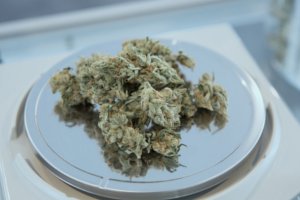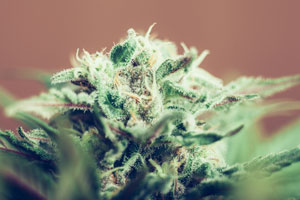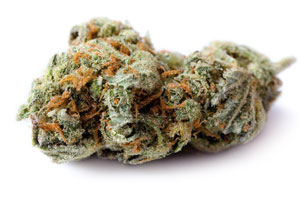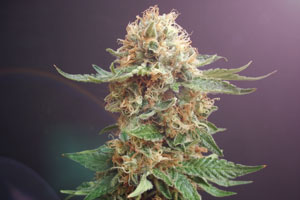Log In To Your Account
Log In With Facebook
Growing cannabis, or marijuana as it is more commonly known, is more involving process than most people realize. Like any plant, there is a vast difference between professional and recreational growers. A person cannot expect award winning results without award winning effort. Likewise, do not drop a cannabis seed in dirt from the back yard and expect anything remotely special.

Commercial operations take thousands of dollars of investment before the first seed can even be planted. Master Growers spend years developing their systems and genetics. As the cannabis industry moves into the regulated marketplace, competition and quality have boomed. Flower is the base of the medical and recreational THC and CBD markets.
The active ingredients in cannabis (known as THC and CBD) are found mainly in the unpollinated calyxes of the female plant. Male plants produce pollen that can travel miles in the open air. A single male plant can destroy the commercial and medical potential of every plant it pollinates by causing them to produce seeds.
As a female cannabis plant grows its flowers (known as buds), it produces THC and CBD in large quantities unless it is pollinated. Once pollinated, the plants will produce seeds instead of THC and CBD. This is why many growers elect to use greenhouses or other structures that can prevent pollination from a nearby rouge male.
When stressed a female plant can produce male pollen sacks which is commonly referred to as a hermaphrodite. Stress like light during the dark cycle during the bloom, heat, and genetic instability can cause this change in any cannabis strain. In order to prevent stressing their plants, many growers invest in light-proof material, air conditioning, and green lights in their grow rooms.
Some strains have been bred to be more resistant than others to specific types of stress. Many of these strains are commercial powerhouses that are considered easy to grow. Strains like Blue Dream and OG Kush are commercial successes that are simply easier for novice growers to start with and flowering monsters to anyone with a green thumb.
The most common image associated with cannabis is the leaf of the plant. Yet this is not the part with the highest concentration of cannabinoids. The highest levels of compounds like THC, CBD and terpenes are in the flower of the cannabis plant, not the leaves. There is still some cannabinoids in the leaves and stalks but the levels drop off significantly as the crystal-like trichomes covering the flower fade.
There are three main species of cannabis; Sativa, Indica, and Ruderalis. Sativa and Indica are the most common forms of cannabis as they provide ample flowers with high levels of cannabinoids. Ruderalis is rarely cultivated because of its poor flower/cannabinoid production. Sativa and indica plants form the genetic base of virtually all cannabis including what people call hemp.
People will often refer to plants by strain name but the name is not the same as the species. A weed strain is normally defined as a specific genetic expression of the cannabis plant. By mapping the genetic profiles of different known strains, a map emerges. The vast number of strain names on the market today is an indicator of how many different profiles there are.
Any type of cannabis can come in different colors as well. Green is the default but strains that grow purple, blue and red have also been reported. This change in color is mainly due to the levels of anthocyanins present in the plant at the time it is seen.
Anthocyanins are a group of around 400 water-soluble pigments that are classed as flavonoids. These flavinoids appear red, purple or blue according to their pH level. Acidic pH levels make them appear more red, neutral conditions result in purple and alkaline rich plants appear more blue. Cold temperatures can also effect the rates that plants produce different flavinoids.
The levels of flavinoids within the plant change over time as the plant grows in much the same way that cannabinoids are. These water-soluble compounds are in every cell of the plant and help produce the compounds people are looking for, namely THC and CBD. Only after the plant is harvested are the levels of cannabinoids and flavinoids locked in place.
Once harvested, the flower has to go through a drying and curing process before it is ready to be consumed. These processes reduce the moisture content of the flowers in a stable and even way. A good cure will result in a fragrant and flavorful flower that snaps cleanly apart but doesn't crumble.
Sativa flowers tend to be airy and narrow. These plants are commonly tall, with large inter-nodal spaces between flower sites. The high provided by this variety tends to be energetic and mentally focused. Some people also report feelings of paranoia or discomfort when consuming sativa dominant varieties of cannabis.

Landrace strains from South Africa like Durban Poison and modern strains like Jack Herer are identified as sativas. These strains grow tall, with flowers that grow lightly packed compared to other varieties grown under similar conditions. They also share the ability to produce mentally focused highs with great potency.
The best time to consume sativa flower for many users is during the day. The energizing and mentally stimulating feelings associated with strains like Durban Poison and Jack Herer are well documented. Sativa dominant strains also have a tendency to cloud the mind and make complex planning difficult.
Indica flowers tend to be dense and thick. Predominantly short and wide plants, these plants have little distance between growth nodes. The high produced by this variety is normally located in the body. Feelings of 'couch-lock' sleepiness and sedation are common when consuming Indica dominant varieties.
Landrace strains like Hindu Kush and modern variants like Blueberry are known as indicas. These strains are known to produce powerful body highs that tend to elevate the mood. Indicas tend to produce short and wide nugs that are significantly denser than other varieties as well.
The best time to consume indica flower for many users is the evening. The sedative effects make relaxation and immobility a welcome effect. If consumed during the day, it can result in feelings of sluggishness and lack of motivation. Physical activities are often more difficult with indicas since the body generally feels slow to respond.
Indica and sativa plants can produce hybrid offspring that show the characteristics of both parents. Depending on dominant and recessive gene expression, different traits can be selectively bred into or out of a plant.
Hybrid flowers and highs tend towards having a balance between the two parent strains. Cultivators can breed many generations of cannabis in a relatively short time. This lets them refine the plant to produce exactly what they want and ensures successive generations of the plant produce a similar product.
Without the stabilization process, a single generation of seeds may show multiple expressions. One plant may be short and thick while another from the same batch may grow to be tall and lanky. This can make getting the desired genetics to express at their optimum levels much more difficult or even impossible.
Ruderalis is rarely cultivated because of its poor flower/cannabinoid production. The ruderalis stalk is too small and weak for making fiber, the buds are too small and sparse for smoking, and it can't produce much in the way of seed either. All in all, it is inferior to the other varieties to commercial or recreational cultivators in many ways.

Ruderalis is not a waste though. This species is able to flower regardless of light levels, resists disease and pests better than indica or sativa varieties. Although ruderalis does not produce a commercially viable; flower, fiber, or seed, it has the most tenacious genetics of the entire genus.
Ruderalis earned the nickname 'ditch weed' by being able to grow in the harshest of conditions. This little bugger has been seen growing everywhere in America and Europe that hemp was once prevalent.
When Ruderalis is cultivated, it is normally crossed with an indica or sativa in the attempt to produce a more tenacious plant. Breeders must go through many generations of offspring in order to stabilize the genetics and ensure that every seed will be uniform. Otherwise, growers that try to cultivate the seed will see many phenotypes expressed.
Many believe hemp is a species of cannabis but it is not. Hemp is a term used to describe cannabis that has no THC. Special strains of the Indica or Sativa plant have been bred specifically to produce low levels of THC, normally between .5% and 1%. Any cannabis plant that produces less THC than 1% is considered hemp.
There are several strains that are used in industrial hemp production. This is due to the different needs of hemp producers. Different strains are used by growers depending on their needs. High CBD flower is a different strain than those grown for seed or fiber. Hemp seed is normally grown from an indica variety while hemp fiber is best cultivated with a sativa dominant strain.
Medical patients looking for CBD find that hemp is high in this compound. Smoking the flower of high CBD hemp takes effect within seconds and can last for hours. The cannabis flowers have the highest concentration of CBD on a plant. The most potent concentrations of CBD are found in a female plant that has not been pollinated.
Cannabis flower has been used since the dawn of man for healing. As such, man has worked with the cannabis plant to produce unbelievable levels of cannabinoids and terpenes. Not to mention the sheer variety of shapes, colors and smell variations that have developed over the course of human history. The variety and potency of cannabis today is a testament to the dedication of millions of humans over centuries.

In ancient India, healers saw cannabis flower as representative of the Hindu god Shiva . Legend holds that Shiva created a drink that he shared with humanity called Bhang. It is prepared by mixing pulverized cannabis flower with milk, ghee( clarified butter) and spices. Hindu monks still use bhang to boost meditation and to achieve states of transcendence.
Shiva isn't the only historical figure that used cannabis flower either. Cannabis flower was also used by Queen Victoria to treat pain and menstrual cramps. She also consumed it mainly in the form of Bhang as smoking was considered a male endeavor during Victoria's reign in the 1800's.
For those of us that need to keep THC levels in check, flower may provide the right level of effects without sending us over our limit. There is a lower percentages of THC in raw flower than in products like shatter, edibles, and tinctures. This makes smoking or vaping flower a good way for people to get small doses of THC or CBD. Small is a relative word here as every person's body has different THC and CBD tolerances.
People who are worried about smoking are often more comfortable using a vaporizer to consume. Vaping has the added benefit of providing a better flavor on top of being solvent free. By not burning the cannabis flower, a consumer avoids ingesting the ash and other compounds found in combusted plant matter.